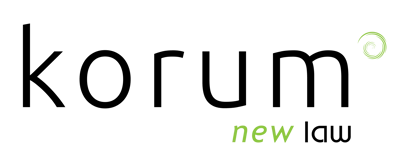Legal Technology Implementation: A Transformation Journey.

How should we implement legal technology solutions to truly improve legal operations?
In-house legal departments have been listening to the endless drumbeat of consultants and vendors talking about legal technology for quite some time, but when I talk to general counsels, many of them still don’t understand how they can implement process and legal technology solutions to make a real change in their teams. Below is a case study that highlights how I was able to design and deliver a real legal technology solution that both allowed the client to move up the value chain and work on higher-value (and more interesting) work as well as speed up the cycle time for legal review to one-tenth of what it started out at, across four business lines operating in multiple jurisdictions.
Case Study in Implementing Legal Technology to Enhance Legal Operation Efficiecy
Our client is a manufacturer of industrial and heavy equipment that was faced with a very high-touch, manual process for executing sales contracts. The south-Asia regional legal team supported all four business lines that were active in the region. However, due to regional and cultural differences, as well as different sales processes and customer bases for the various lines of business, the legal review of sales contracts was slow, inconsistent, and very labor intensive. The legal team wished to improve their ability to work on higher-risk areas (such as anti-bribery compliance) as well as strategic transactions and sought a solution to free up their capacity for these goals while still effectively managing the contract risk of the organization’s sales operations. The legal technology solution was delivered in three steps.
First Step of Legal Technology Implementation: Process mapping
Initially, I developed process maps for all the various lines of business, and then annotated the individual process maps to document the various cultural differences for those sales processes. This exercise revealed that there were in fact not four basic processes (one for each line of business), but rather eight basic processes (two for each line of business). Each unit had a process for sales that used the company’s template as the starting point, as well as a different process when the customer provided the initial agreement. However, the company’s market power in these various business lines meant that one of these starting points would always predominate, but the starting point was not consistent across business lines. By mapping these processes, and focusing on the dominant process, the client was able to redesign their process, put metrics around the key points of the process, and improve turnaround time for the business by 40%. All the while, because regional and cultural variations were documented and validated as part of the process mapping exercise, the newly designed process was fully tailored to support the business and flexible enough to accommodate all the particular ways of working that each line of business utilized.
Second Step of Legal Technology Implementation: Technology roadmap
I also worked with the legal department as well as the regional IT team to develop a five-year legal technology roadmap. This included legal tools to assist the sales contracting process from both a template automation standpoint as well as a way to streamline non-standard agreements that came from customers and quickly pinpointing key legal risks by using machine-learning tools. Over the next 12 months, both legal tools were slowly piloted and then rolled out, starting out in limited use cases in order to solicit feedback and build momentum. Once the initial course-corrections had been made after a result of the pilot, the legal tool was introduced in a phased approach, one line of business at a time. A “change champion” within each line of business was assigned and coached to equip them with the legal tools to drive the process change and integrate the legal technology into the day-to-day operations of the organization. Within four months of the “go-live” date, the system users reported a 90% satisfaction rate and an effective 100% usage rate of the new legal technology.
Last Step of Legal Technology Implementation: Continuous Improvement
As part of this project, I also designed and implemented a continuous improvement methodology to ensure that the legal technology was maintained with transparent accountability for who would maintain the system, who would be responsible for pulling reports out of the system, and who would be responsible for integrating the system with additional business systems such as accounts payable and litigation management systems in the future (e.g., after the consulting agreement ended). All of these also had a timetable with reminders to ensure that maintenance would not be neglected.
The Results of Legal Technology Transformation and Innovation
In the end, the key performance metric – cycle time in legal review – was cut down to 10% of the time it started out as before any improvements were made. In addition, the cost of the contracting software was justified fully by the ROI in increased profitability, increased revenue growth, and decreased legal risk.
Bill Novomisle
Jun 6, 2018
Related Posts.
By: Lily Evans and Ummu Fallon.
KorumLegal Consultant: Ummu Fallon explores ALSPs.
Ummu Fallon has been a legal operations professional since 2017 with experiences across multiple jurisdictions. She has dedicated expertise in legal operations within in-house legal departments with..
By: Lily Evans and Celine Verdez
KorumLegal Consultant: Celine Verdez believes that ALSPs have evolved
Our KorumLegal consultant this month is Celine Verdez. With a proven track record of negotiating complex cross border deals and navigating large scale projects in multicultural environments and..
